
The Oregon Historical Society(OHS) is an organization that encourages and promotes the study and understanding of the history of the Oregon Country, within the broader context of U.S. history. Incorporated in 1898, the Society collects, preserves, and makes available materials of historical character and interest, and collaborates with other groups and individuals with similar aims. The society operates the Oregon History Center that includes the Oregon Historical Society Museum in downtown Portland.

The Barlow Road is a historic road in what is now the U.S. state of Oregon. It was built in 1846 by Sam Barlow and Philip Foster, with authorization of the Provisional Legislature of Oregon, and served as the last overland segment of the Oregon Trail. Its construction allowed covered wagons to cross the Cascade Range and reach the Willamette Valley, which had previously been nearly impossible. Even so, it was by far the most harrowing 100 miles (160 km) of the nearly 2,000-mile (3,200 km) Oregon Trail.

Columbia Rediviva was a privately owned American ship under the command, first, of John Kendrick, and later Captain Robert Gray, best known for going to the Pacific Northwest for the maritime fur trade. "Rediviva" was added to her name upon a rebuilding in 1787. Since Columbia was privately owned, she did not carry the prefix designation "USS".

The Provisional Government of Oregon was a popularly elected settler government created in the Oregon Country, in the Pacific Northwest region of North America. Its formation had been advanced at the Champoeg Meetings since February 17, 1841, and it existed from May 2, 1843 until March 3, 1849, and provided a legal system and a common defense amongst the mostly American pioneers settling an area then inhabited by the many Indigenous Nations. Much of the region's geography and many of the Natives were not known by people of European descent until several exploratory tours were authorized at the turn of the 18th and 19th centuries. The Organic Laws of Oregon were adopted in 1843 with its preamble stating that settlers only agreed to the laws "until such time as the United States of America extend their jurisdiction over us". According to a message from the government in 1844, the rising settler population was beginning to flourish among the "savages", who were "the chief obstruction to the entrance of civilization" in a land of "ignorance and idolatry".
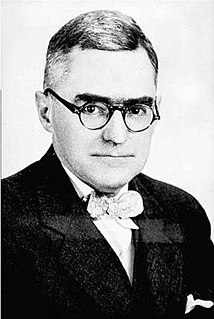
Lewis Ankeny McArthur, known as "Tam" McArthur, was an executive for Pacific Power and Light Company. He was also the secretary for the Oregon Geographic Board for many years and the author of Oregon Geographic Names. His book, now in its seventh edition, is a comprehensive source of information on the origins and history of Oregon place names. It is a standard reference book in libraries throughout Oregon and the Pacific Northwest. Tam McArthur Rim in the Cascade Mountains is named in his honor.
The origin of the name of the U.S. state of Oregon is unknown, and a subject of some dispute.
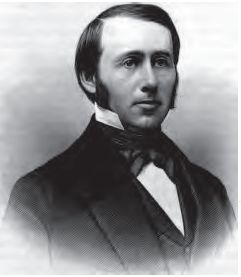
George Henry Atkinson was an American missionary and educator in what would become the state of Oregon. In Oregon, he served as a pastor for several churches, helped found what would become Pacific University, and pushed for legislation to create a public school system in Oregon Territory. The Massachusetts native later served as the county schools superintendent in Clackamas and Multnomah counties.

The Confederate Veteran was a magazine about veterans of the Confederate States Army during the American Civil War of 1861–1865, propagating the myth of the Lost Cause of the Confederacy. It was instrumental in popularizing the legend of Sam Davis.

Eva Emery Dye was an American writer, historian, and prominent member of the women's suffrage movement. As the author of several historical novels, fictional yet thoroughly researched, she is credited with "romanticizing the historic West, turning it into a poetic epic of expanding civilization." Her best known work, The Conquest: The True Story of Lewis & Clark (1902), is notable for being the first to present Sacagawea as a historically significant character in her own right.
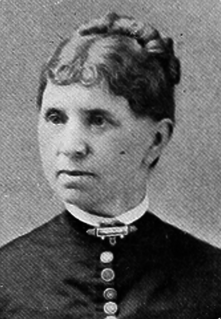
Frances Auretta Fuller (Barritt) Victor was an American historian and historical novelist. She has been described as "the first Oregon historian to gain regional and national attention." She was known for her books about the West and especially Oregon history.
Events from the year 1792 in the United States.

The following works deal with the cultural, political, economic, military, biographical and geologic history of pre-territorial Oregon, Oregon Territory and the State of Oregon.
The following is a timeline of the history of the city of Portland, Oregon, United States.

The Circuit Rider is a bronze sculpture by Alexander Phimister Proctor, located in Capitol Park, east of the Oregon State Capitol in Salem, Oregon, in the United States.
The Clatsop Mission was an outpost of the Methodist Mission near modern Astoria, Oregon, United States. Joseph H. Frost and his family was sent to the Clatsop Plains at the mouth of the Columbia River in 1841. Frustrated at his inability to convert the local Clatsop and Nehalem people, Frost took his family and left the area in August 1843. Josiah Parrish was appointed as his replacement, working at the station until its closure the following year in 1844.

Tsin-is-tum, also known as Jennie Michel, was a Native American folklorist based on the Pacific Coast of Oregon. Called "Last of the Clatsops" at the time of her death in 1905, Tsin-is-tum was much photographed. She provided oral history for scholars of the indigenous peoples of the Pacific Northwest region of the United States. Among her accounts was of family members who interacted with members of the Lewis and Clark expedition in the winter of 1805-1806; she helped historians to locate salt works they had used.
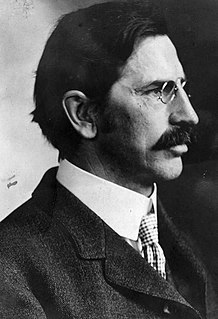
Frederic George Young (1858–1929) was an educator in the U.S. state of Oregon. He was born in Burnett, Wisconsin on June 3, 1858, and after graduating from Johns Hopkins University in 1886, he taught in Wisconsin and South Dakota. He moved to Portland in 1890, and served as principal at its high school and as president of Albany College before being appointed professor of economics and history at the University of Oregon in 1895. He was a founding officer of the Oregon Historical Society in 1898, and as editor of its Oregon Historical Quarterly from its founding in 1900 through the December 1928 issue. He served on the Oregon Commission for the Lewis and Clark Centennial Exposition. He was dean of Oregon's School of Sociology from 1919 until his death.

A Day with the Cow Column in 1843 is a text composed by Jesse Applegate describing his experience leading one of the parties of pioneers to the Oregon Country in the Pacific Northwest of North America in 1843. It was published in the first volume of Overland Monthly in 1868, read before the Oregon Pioneer Association in 1876, published in the first volume of the Oregon Historical Quarterly in 1900, published in a book published by Joseph Schafer in 1934, and published by Ye Galleon Press in 1990.
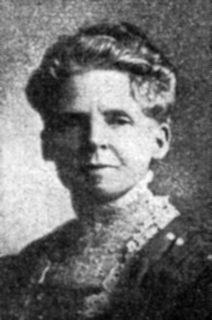
Mary Osborn Douthit (1850–1908) was an early white settler of the Oregon country, a teacher, a prominent advocate of woman suffrage, and editor of the book The Souvenir of Western Women, published to coincide with the Lewis and Clark Centennial Exposition in Portland, Oregon in 1905. She immigrated to Oregon in 1853 at the age of three. Her parents were James Harrison and Lueza Osborn Douthit. She was killed when struck by a streetcar in downtown Portland in 1908; she had been living in Portland for 15 years. According to fellow suffragist Abigail Scott Duniway, Douthit's untimely death cut short a literary career on the cusp of success. Her book had brief, positive mentions in the Oregon Historical Quarterly and in the Pacific Monthly.














